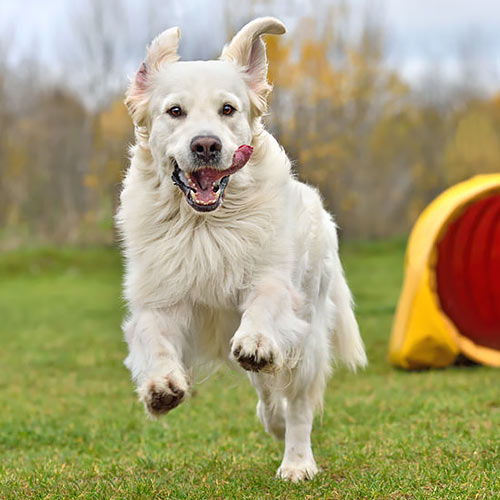Crate training is a dog-owner’s dream tool. When done correctly, it is a comfortable and humane means of confining a dog when she can’t be constantly observed. Whether it means preventing a house-training accident or chewed sofa, the rewards here are well worth the effort.
At the onset, it should be said that the crate should not be used for excessive amounts of time. Daily use is fine; 24-hour use is not. The crate is not a dog jail. Your dog will need regular time with you and sufficient exercise.
A sufficiently sized crate is important. When you are buying for a pup, purchase a crate that he will comfortably fit into as an adult. He should be able to stand up, lie down, turn around inside. Actually most people make the mistake of buying a crate which is too big; then a puppy messes in one area knowing he still has a large area left to play and sleep. When you buy a large crate for a pup, block off the back half or so and gradually decrease the blocked off area until the pup grows. This is eases house-training tremendously (see our article on house-training).
Dogs are den animals. This applies to undomesticated canins as well as their domesticated cousins. To them, a den is “homey.” There is a large amount of comfort and security that dogs associate with their den. Opponents of using a crate fail to remember this very important concept. They view the crate as a prison. By denying their dog the use of a crate they are depriving the dog of their natural means of comfort and security. When a crate is used properly, it is a great asset – to the dog and to her owner.
If possible, start young. Most puppies soon learn to enjoy their time alone, if the crate is not abused. Puppies, and adult dogs as well, like a place to “call their own.” This is helpful when the dog wants to escape from that bratty neighbor kid who always pulls the dog’s tail 🙂 Properly trained puppies find the crate as a haven: a place to rest, relax, eat, or simply loaf.
Crate training should be positive. When you’re in the beginning stages of training, throw a treat into the back of the crate so the pup/dog associates the crate with something positive. At this point, I recommend making it verbal: “Fido, crate” and then the treat. Treats and toys should be regular visitors in the crate. You may also place a pet bed or blanket inside; just be careful the dog does not tear it into pieces – especially pups. Do not use the crate as punishment. Again, it’s not a jail. Scolding a dog for a misdeed and slamming him into the crate doesn’t help either of you. Remember, keep it positive.
Another way to keep the crate training positive is place it a good location: not in an isolated place where the dog feels like she’s in solitary, but not in a high traffic area where she’s constantly getting bumped into or the noise is overbearing. Some owners place one crate in an area where they operate frequently during the day (like a living room or kitchen) and another one in the bedroom at night. Location goes a long way in making the crate a positive experience for your dog.
Dogs that are particularly excitable or nervous while in the crate may need to be “bird-caged.” Simply put a blanket over the crate so the dog cannot see out. Cruel? No way! In fact the majority of dogs that need this bird-caging experience a calming effect. “Whew! This den is way cool!” Additionally, dogs that experience separation anxiety may be calmed by listening to a radio or TV.
- using the crate as punishment or beating against the sides of the crate.
- letting the dog out when it whines
- inappropriate crate where the dog can chew out. Wire crates typically reduce the “den effect.”
- wrong location


